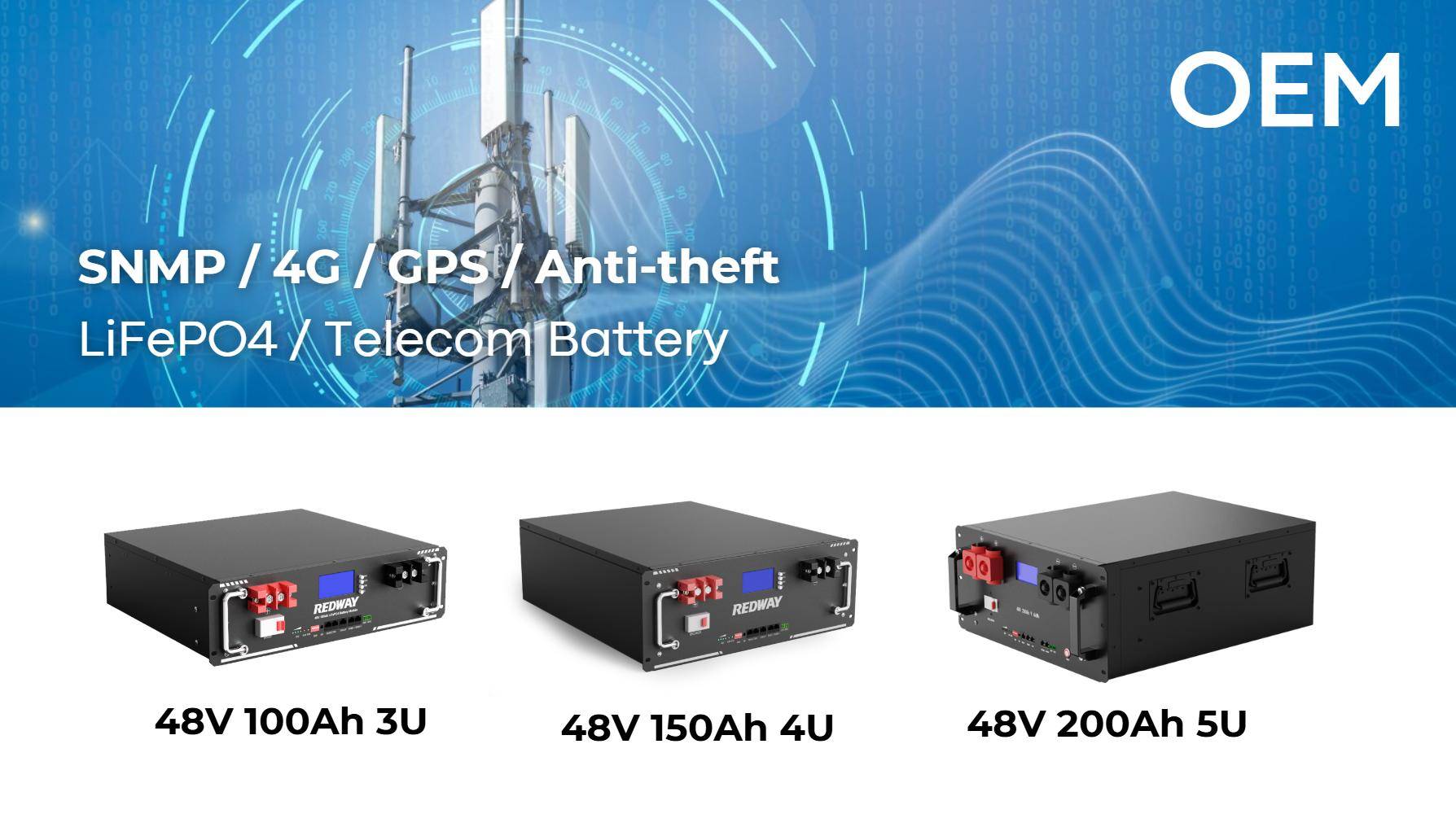
Blog
What Are OEM Telecom Lithium Battery Solutions and How Do They Benefit Your Network?

OEM telecom lithium battery solutions are custom-designed power systems tailored for telecommunications infrastructure. They provide reliable, high-energy-density backup power, ensuring uninterrupted network operations during outages. Benefits include scalability, longer lifespan, and compatibility with renewable energy integration. These batteries are engineered to meet specific voltage, capacity, and environmental requirements of telecom installations.
How Do OEM Lithium Batteries Differ From Standard Telecom Batteries?
OEM lithium batteries are custom-built to match precise telecom equipment specifications, unlike generic batteries. They feature advanced thermal management, modular designs for easy expansion, and intelligent battery management systems (BMS) for real-time monitoring. Standard batteries use one-size-fits-all architectures, while OEM solutions optimize space, weight, and performance for tower sites, data centers, and 5G nodes.
What Customization Options Exist for Telecom Lithium Batteries?
Key customization parameters include voltage configurations (48V/72V), rack-mountable designs, IP65-rated enclosures for harsh environments, and hybrid compatibility with solar/wind systems. Manufacturers also offer cell chemistry variations (LFP/NMC) for temperature resilience, bespoke communication protocols (CAN, RS485), and load-sharing capabilities for multi-tower networks.
| Customization Parameter | Options | Use Case |
|---|---|---|
| Voltage Configuration | 48V, 72V, 96V | 5G macro sites |
| Environmental Rating | IP65, IP68 | Coastal installations |
| Communication Protocol | Modbus, CAN Bus | SCADA integration |
Why Are Lithium Batteries Replacing Lead-Acid in Telecom Infrastructure?
Lithium batteries offer 3-5x longer cycle life (4,000+ cycles), 50% weight reduction, and 95% round-trip efficiency versus lead-acid. They charge faster, require zero maintenance, and operate in -40°C to 60°C ranges. Telecom operators report 40% lower total ownership costs despite higher upfront prices, driven by reduced replacement frequency and energy savings.
The transition accelerates as operators deploy batteries in extreme environments where lead-acid fails. In Arctic deployments, lithium systems with self-heating modules maintain performance where lead-acid loses 70% capacity. Solar hybrid sites benefit from lithium’s partial state-of-charge tolerance, unlike lead-acid’s sulfation issues. A 2023 study showed lithium-powered sites achieved 98.7% uptime versus 91.4% for lead-acid during grid instability periods.
Which Safety Features Are Critical in Telecom Lithium Battery Systems?
Multi-layered protection includes cell-level fuses, flame-retardant separators, gas venting mechanisms, and AI-driven fault prediction. UL1973-certified packs feature cascade shutdown during thermal runaway and seismic-resistant mounting. Advanced BMS prevents overcharge/over-discharge, balances cells, and integrates with network SCADA systems for remote emergency isolation.
How Does Edge Computing Influence Telecom Battery Design?
Edge data processing demands 99.9999% uptime, requiring batteries with ultra-fast response (<5ms switchover) and dynamic load sharing. OEMs now embed edge-ready batteries with predictive analytics, prioritizing low-latency power delivery to micro-data centers. Designs incorporate high C-rates (2C-3C) for sudden compute spikes and cybersecurity-hardened firmware to protect grid-edge resources.
What Role Do Solid-State Batteries Play in Future Telecom Networks?
Emerging solid-state lithium batteries promise 2x energy density (500Wh/kg) and elimination of flammable liquid electrolytes. Prototypes from OEMs show 10-minute charging for full-site backup and 20-year lifespans. These will enable compact “battery-in-pole” designs for small cell deployments and satellite-linked base stations in 6G networks.
How Are OEMs Addressing Sustainability in Telecom Battery Production?
Leading manufacturers use closed-loop recycling (95% material recovery), bio-based electrolytes, and blockchain-tracked conflict-free minerals. New waterless electrode processing cuts CO2 footprint by 34%. Some offer battery-as-a-service models where operators lease instead of owning batteries, incentivizing eco-friendly end-of-life handling.
Partnerships with telecom giants have yielded 83% recycled content in new battery housings. A pilot program in Scandinavia uses retired EV batteries repurposed for tower backup, extending useful life by 12 years. Manufacturers now publish annual sustainability dashboards tracking kWh produced per kg of mined lithium, pushing the industry toward UN SDG targets.
“The telecom sector’s shift to OEM lithium solutions isn’t just about energy—it’s enabling network densification for 5G/6G while meeting ESG goals. We’re seeing batteries evolve into intelligent grid assets that provide frequency regulation and black start capabilities. The next frontier is battery-digital twin integration for predictive maintenance across global tower portfolios.”
– Dr. Elena Voss, Chief Technology Officer at Global Telecom Power Consortium
Conclusion
OEM telecom lithium batteries represent the nexus of customization, reliability, and smart energy management. As networks transition to software-defined infrastructure and Open RAN architectures, these purpose-built power systems will underpin telecom’s shift from energy consumers to prosumers. Operators adopting modular, future-ready lithium solutions today position themselves to leverage AI-driven energy optimization and next-gen network slicing.
FAQ
- Can existing telecom sites retrofit OEM lithium batteries?
- Yes, most OEMs provide retrofit kits with adapter plates and voltage converters. However, a site audit is recommended to assess compatibility with existing rectifiers and grounding systems.
- What certifications should OEM telecom batteries have?
- Mandatory certifications include UL1973 (stationary storage), IEC62619 (safety), and UN38.3 (transport). Regional standards like CE (EU), BIS (India), and GB/T (China) apply. For harsh environments, MIL-STD-810G and IP68 ratings are advised.
- How do lithium batteries perform in extreme cold?
- Advanced OEM solutions with heated enclosures and low-temperature electrolytes operate reliably at -40°C. LFP chemistry retains 80% capacity at -30°C versus 50% for standard Li-ion.
Know more:
What Are OEM Telecom Lithium Battery Solutions and How Do They Benefit Your Network?
What Are the Key Components of Telecom Battery Systems?
What Makes Telecom Lithium Battery Packs Compatible and High-Performing?
How Can Smart Charging Optimize Telecom Lithium Battery Efficiency?
How Can Retrofitting Telecom Systems with Lithium Batteries Save Costs?
How to Install and Maintain Telecom Lithium Battery Systems Effectively?













